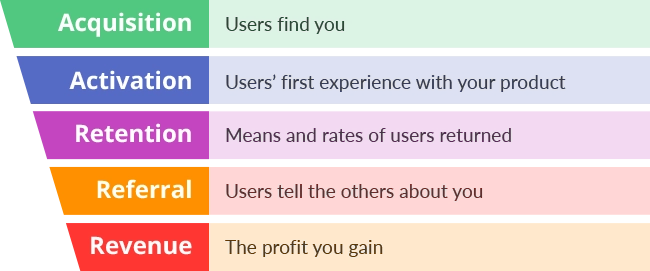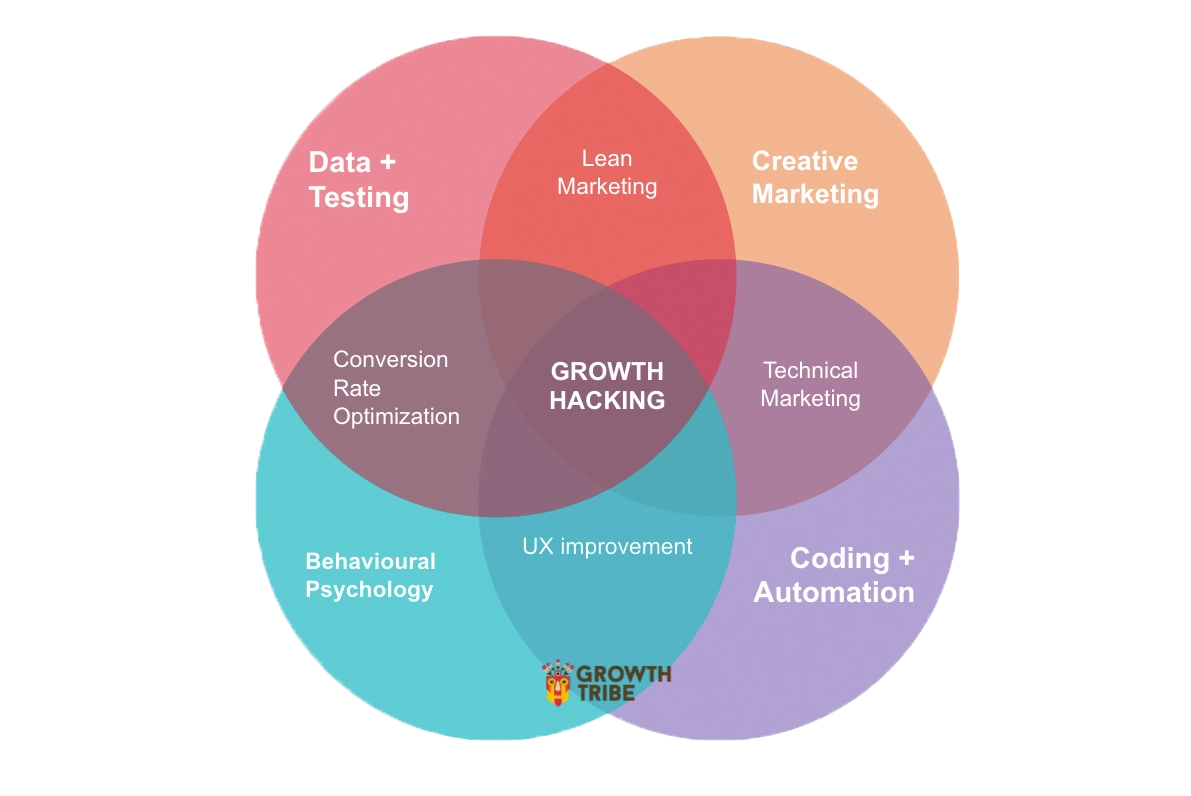March 08, 2018
A modern view on Growth Hacking: Introducing the RELIEF framework

I fell in love with Growth Hacking. And since more and more people start to misunderstand what it is about, here’s my personal view.
The Future of Marketing
GH = Growth Hacking
Sean Ellis, who coined the term Growth Hacking back in 2010, wrote that growth hackers were:
a hybrid of marketer and coder, one who looks at the traditional question of ‘How do I get customers for my product?’ and answers with A/B tests, landing pages, viral factor, email deliverability
Modern definitions use the AARRR framework to describe the user journey and the different “steps” that can be hacked to lever growth.

Growth Hacking teams’ everyday focus is to build innovative, technology-based processes (“hacks”) that aim at leveraging every letter in AARRR, while optimizing the use of resources (limited money).
In a nutshell, Growth Hacking is all about being smart, and it means becoming an expert in understanding the human psyche and developing strong technical capabilities.

An early example of Growth Hacking was Hotmail’s inclusion of “PS I Love You” (at the bottom of each email sent) with a link for others to get the free online mail service. That allowed the company to reach new customers without spending any money on acquisition.
At that time, it was new and ingenious, even if nowadays everybody is familiar with the “Sent from my iPhone” signature tag.
Therefore, Growth Hacking needs to relentlessly reinvent new techniques at a high pace, in a digital environment that is constantly evolving.
Three Misconceptions
What some people think. And what Growth Hacking is not.
- 1) “Growth Hacking is illegal”
I think people often misinterpret the “Hacker” part of “Growth Hacker”, and that leads to misleading definitions such as “Growth Hacking leveraging growth at all cost, even by illegal or unethical means”.
No. That’s not true. The meaning of “hacking” is being smart and imaginative, thinking out of the box. To be fair, Growth Hacking by design reaches unexplored areas, where the legal regulations might still be unclear or even non-existent (e.g data scrapping, retargeting…)
(Also, there will always be people that violate the law, including entrepreneurs and growth hackers.)
- 2) “Growth Hacking is mostly about scrapping email addresses from LinkedIn”
Entrepreneurs think they need a growth hacker solely to scrap email addresses from LinkedIn. LinkedIn is a very effective and promising platform for promoting products. But Growth Hacking is not only about the acquisition. It’s only one aspect of it. And LinkedIn is not the only platform. It’s only one among others, that might be appropriate or not.
- 3) “I need a Growth Hacker because I have no user”
If you have no users, then you probably have a bad product. Growth Hacking will not help you get your first users. Growth comes after the product-market fit.
People LOVING your product is the first and only assumption of growth. Once your product is a MUST-HAVE, then you can start thinking about leveraging growth as fast as possible.
Introducing the RELIEF Framework
One fundamental difference from traditional marketing is that Growth Hacking does not separate marketing from product development. The point is not to make the product look better, but to improve the experience provided to the current or potential user.
My personal definition of Growth Hacking:
Growth Hacking is leveraging growth, through smart, innovative technology-based “hacks”, that significantly enhance the experience provided to the users from A to R.
Yet, if the AARRR (A to R) framework shows us where to look, it doesn’t say where to go, nor how to approach the different steps to “enhance the experience”.
Don’t worry, the RELIEF criteria have you covered!
- Acquisition → Relevance
Where and how can I reach the best potential customers for my product? Acquisition is not only about the number of people that visit your website, but also about the type of audience. There are many acquisition channels (Online Ads, SEO, Content Marketing, Email Marketing…): enhancing the experience is serving the relevant content to the relevant potential user, using the appropriate channel. Growth Hackers’ mission is to find a way to reach these people without spending too much money.
- Activation → Education/Engagement
To improve conversion, ask yourself if your landing page/demo/ad is showing all the benefits of your product. Do visitors understand quickly what pain points you’re solving? Is it easy for them to engage, sign up, try or learn more? Your mission is to educate and engage your leads asap.
- Retention → Loyalty
How to turn people into frequent users? Be loyal to them and they will be loyal in return. Continuously provide new features and improvements for your existing customers, the best support, and listen to their needs. Too many startups forget to leverage their own users and spend too much time on acquisition. Love does not happen in one day. Your long-term value to your users determines the long-term value you get from them.
- Referral → Incentives + Exceptionality
There is one prerequisite for your customers to refer your product to their friends. You need to be better than your competitors. No secret. First, find what makes you exceptional (=unusually excellent; superior), and then you can build the referral system and incentives on top of that. Otherwise, it won’t work, no one commends a crappy product.
- Revenue → Fairness (of Pricing)
Are customers willing to pay for my product? Set the right price, but also the right pricing strategy. Explore different price ranges, different plans, and consider monthly payments, annual payments, daily payments, pay-per-use, and one-time subscriptions (even for SaaS startups).
A Growth Hacking Journey
- The objective of the growth hacker is growth.
- Growth can be measured (with KPIs) under the AARRR funnel.
- To increase growth, refer to the RELIEF criteria to find the right direction.
The RELIEF criteria give a direction but don’t say HOW to reach this destination. Why? Because this is precisely where the growth hackers’ job starts :) Running A/B testings, setting up Automations, designing Landing Pages, coding Referal systems… As mentioned above there are a lot of different skills and techniques a good growth hacker must master in order to imagine a hack and implement it by himself/herself! That is the power of Growth Hackers.